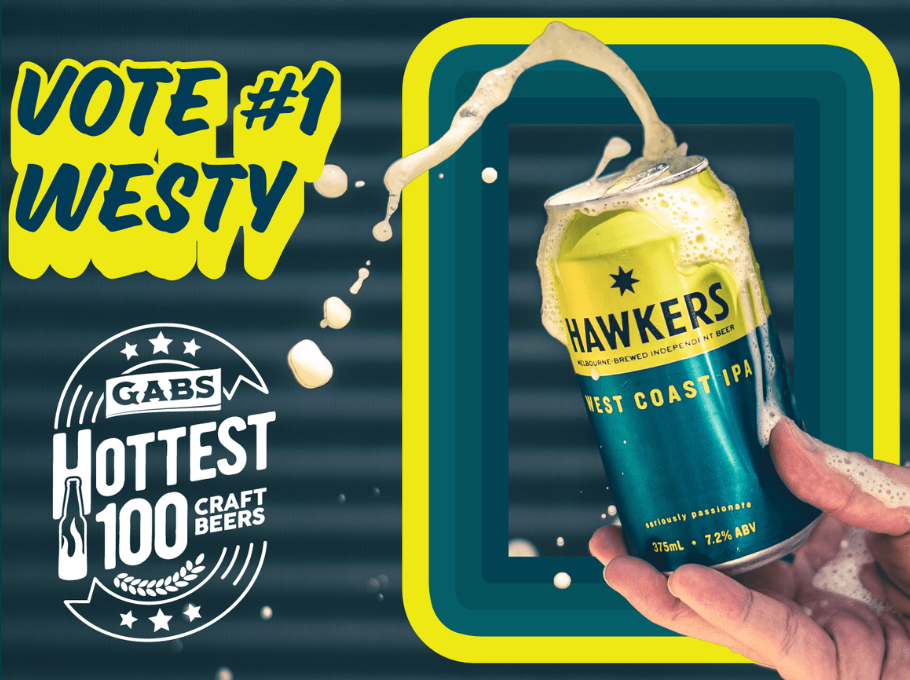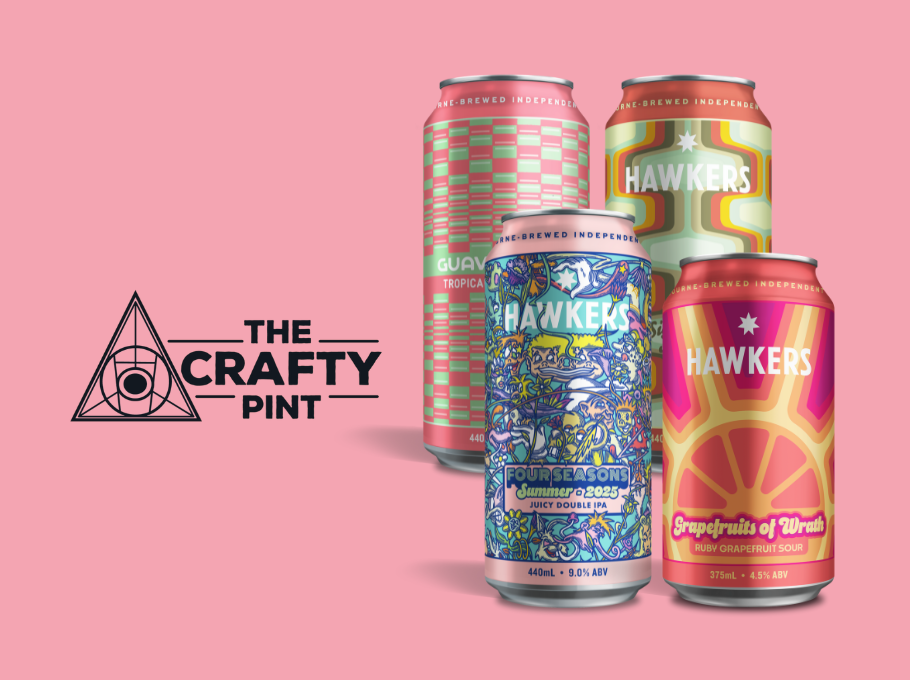The history of barrel-aged beer
The logistical troubleshooting of transporting products from one location to another is about as old as human culture itself—certainly as old as civilisation. Barrel ageing was never really meant to intentionally change the profile of beer. Barrels originally came about around 300 BC solely for the purpose of solving a storage and transportation issue, providing a better solution than the heavy amphorae vessels that were being used to store wine, olive oil, fish and more. As more barrels were utilised for convenience’s sake, it became apparent that something else was happening within the barrel. Over time, the barrel and its contents interact to create new flavours, aromas and tannic structures absent in the original liquid.
To sum it up in a few words, barrels became the ideal container for transporting goods. Barrels are relatively easy to manufacture, store large quantities of goods, are easy to move (thanks to the simple fact that they roll), are easy to stack and store in a cargo hold, and are waterproof (though not oxygen-proof… more on this later).
Land and sea faring freight has always taken significant time to reach its destination, particularly in the era when beer was transported in barrels and boats used sails instead of propellers. During the journeys, barrels experienced “resting time”, and that greatly affected the taste of the liquid inside. In particular, the time alcohol spends sitting in a barrel enables the chemical and physical interaction between wood and alcohol. It didn’t take long for people to discover a very distinct difference in taste before and after a journey.
Once upon a time, most (if not all) beer spent at least some time inside barrels before stainless steel became the material of choice to ferment beer without the addition of outside flavours. Brewers would commonly fill these barrels with boiling water or acid to remove any wood flavour, and only once it had been rendered neutral was it considered fit to hold beer.
Today, things are obviously different! Brewers seek to take advantage of these interactions with the wood to create a grand total greater than the sum of its parts. We love, embrace, and seek out those flavours and influences from the barrel.

The “je ne sais quoi” magic barrel touch
Brewers are a romantic bunch and like to think there’s also some magic at play, and to be honest, there may well be! Every barrel tells its unique story from within—the origin and age of the wood, the amount of char, the liquid it once held, the surface area per volume, etc. However, putting beer into a barrel is no guarantee that what comes out will be better—or even good.
The flavours, aromas and tannic structure imparted on a beer vastly depends on the barrel (and, let's face it, how you use it). Much of the character will depend on the previous occupant of the barrel, but other influencers include wood toast/char, age and type of the oak, how many times the barrel has been used and for how long, and storage climate.
What actually happens inside of a barrel is a fascinating scientific process. In essence, chemistry and a touch of physics interact with alcohol at a molecular level. It’s a beautiful exchange of give and take, and yet, somehow, this process is not fully understood.
It all comes down to science… and a bit of magic.
Two Types of Barrel Ageing
There are two major families of barrel-aged beer. The “clean” family utilises barrels that shouldn’t have any yeast or bacteria living in the barrel, which allows all the flavour and aroma to be derived solely from barrel. On the other side of the spectrum, a “mixed culture” is added to sway the flavours or aromas.
This blog is about “clean” barrel ageing. Someday, we will probably touch on “mixed culture” beers.

Why all the oak?
Why not maple wood? Or cherry or chestnut? Because science. Tree anatomy, to be precise. To be accurate, many woods have been used to age beers like Cedar, Amburana, etc… but oak is by far the most loved.
A cooper is a barrel maker; the skilled trade of making barrels is coopering. While it would seem logical that the wood from a fruit tree like cherry, pear, or apple would make an excellent barrel for ageing beer, wine, or spirits, it isn’t that simple.
Oak wood makes the perfect barrel because of its anatomy. Oak trees grow in a specific way that we call “ring-porous.” A ring-porous tree has vessels located in the outer rings of the tree or the tree’s new growth rings that carry water up to its trunk.
As an oak tree grows and ages, the older water vessels (located in the now old rings), become filled and plugged up with a chemical compound called tyloses, which forms a crystalline molecular structure that clogs the older water vessels and gives the oak its signature hardness. The tyloses-filled centre of a mature oak tree is known as the heartwood.
Heartwood is perfect for barrel-making because it doesn’t conduct water. As such, coopers use oak wood to craft watertight barrels.
While there are hundreds of oak species, only a few are suitable for and used in barrel making. Most popular of these are the European oak, Quercus Robur, and American white oak barrels made from the American white oak tree, or Quercus Alba.
And so, with a few specific species of oak, the cooper can craft the perfect storage container.
What happens in the barrel does not stay in the barrel
Now that we understand the foundational science and concepts about wood and barrels, it’s time to look at the actual process.
Breathing
Changes in weather, temperature, atmosphere, and pressure cause wood to expand and contract. This process is known as “breathing.”
When the wooden staves of a barrel breathe, alcohol is drawn into the wood itself, and the alcohol is infused with flavours. At the same time, other, less desirable qualities and flavours are filtered out. The filtering process is often referred to as “maturing,” “mellowing,” or “smoothing” the harsher qualities of alcohol.
Oak, being a porous wood, also allows oxygen to enter the barrel through the staves (despite being watertight). With this, both evaporation and oxidation occur, further impacting the alcohol within the barrel. As some of the alcohol evaporates, oxygen fills the space created inside the barrel. This process is called micro-oxidation and it further changes the flavour. Oxygen is usually the brewer’s bane, but big, heavy beers like stouts, however, can withstand the micro-oxidation process.
Time
Time is critical to the barrel-aged beer process. However, the same conditions that cause wood to breathe are also directly related to how long alcohol must remain in a barrel to mature.
On the molecular scale, alcohol molecules pass through the charcoal layer (created by the charring process) and into the wood, where the alcohol absorbs tannins, sugars, and aromatics. The wood breathes the alcohol in and out repeatedly over time.
Barrels stored in warmer climates age much faster than those kept in colder climates. This is because (*science*) heat speeds up chemical reactions. Heat also creates a more significant pressure differential inside the barrel, forcing the liquid deeper into the wood, extracting more flavour.
During the winter, this chemistry essentially stops. For example, the former Maker’s Mark distiller, Dave Pickerell, once swapped barrels with a Scotch distiller. After regular samplings, he concluded that one year of ageing in Kentucky was equivalent to 3-4 years of ageing in Scotland.
Barrel size is another factor that affects the speed at which beer ages. Smaller barrels speed ageing, as the surface area of the wood in contact with the beer is a higher ratio.

Two Types of Barrel Ageing
So you may already know, there are two major families of barrel-aged beer. The “clean” family utilises barrels that shouldn’t have any yeast or bacteria living in the barrel, which allows all the flavour and aroma to be derived solely from barrel and spirit flavours previously aged in the wood. On the other side of the spectrum, a “mixed culture” is added to sway the flavours or aromas.
So what’s with all the barrel-aged beer magic?
So that’s all there is to it? Just throw some beer into a barrel, wait a while, and then reap the magnificent rewards? Not quite.
There’s another element here that lends itself to the magic of barrel-aged beer: the unknown.
We understand much of the process of barrel ageing, how it works and what’s going on inside the barrel. But not everything. There’s still the underlying element of unpredictability, a quirky bit of reality that masters of the alcohol craft and scientists are unable to explain.
Two barrels, filled with the same beer and aged for the same amount of time, could produce two very different results. Sometimes the results are mind-blowingly excellent, while at other times a complete failure.
And we don’t know why.
Though it wouldn't be good scientific practice to explain away the unknown as “magical,” we can safely say that whatever is happening inside of the barrel, the results are often delightful.
Some of our rules when it comes to barrel ageing
Alcohol doesn’t simply leech out all the goodness of an oak barrel without leaving something behind. The barrel wood staves absorb various qualities and flavours of the alcohol resting within. When beer is aged in a barrel that previously housed a wine or spirit, the beer will take on some characteristics of the previous content(s), including absorbing residual alcohol content. Here are some of do’s and don’ts we like to guide us.
1. Avoid unnecessarily long ageing periods
More time in the barrel does not necessarily make a better beer—it's a process of diminishing returns. Even with our 15-16% ABV barrel-aged stouts, we’re getting nearly all the flavour from that barrel within the first two months. At around four months the flavours are still vibrant, but if we wait much longer oxidation starts to ramp up and the flavours start to mellow. Sometime later we start to see more porous barrels oxidise heavily and we must remove them from the batch. Somewhere, there is a golden window between peak barrel vibrance and softening of the sharp edges in the beer that we aim to end the ageing stage. We would rather take the beer out exactly when it's ready, and if people want to cellar it, they can make that choice.
As opposed to ageing whisky where a clear spirit takes on the flavours of the wood that heavily characterise the final product, we are ageing beer with intention to capture flavour notes from the wood and spirit both to reinforce the beer.
2. Treat the barrel as an ingredient
The barrel will be a major flavour component, so think of it in the same category as malt, hops, or yeast. We brew beers to match and pair with the barrel flavours. Also the we need to remember the previous residents. Alcohols, soaked up to an inch into the wood, may also be extracted into beer.
3. Expect occasional failure
We are not afraid to throw a batch of beer away. Putting beer in a barrel means that we are at the mercy of the chaos factor. This is not beer in a sanitised tank anymore, so the beer might be exposed to ambient yeast and bacteria. Sometimes that beer simply won’t turn out the way we had hoped, and that’s fine. We just dump it and start over. All good brewers dump beer from time to time.
4. We let our taste buds decide
Most information circulating on ageing beer in barrel is not accurate. To be really good at this you have to actively manage the barrel. Prior to filling our barrels, drill a hole and fill it with a stainless-steel nail. These nails are known as “Vinnie nails” and are a popular method used for obtaining a sample of our ageing brew and we sample our beers regularly!
When the beer tastes great, we take it out! We are frequently asked how I know when a project is really “done.” It’s done when you think it tastes incredible. We don’t worry about leaving it in the barrel for a few months to try for even more awesomeness. If it’s that good, odds are that your beer will decline instead of improving. No beer is designed for cellaring, as no brewer can predict what conditions the beer will age in or how it will turn out. This is not to say that cellaring some of these beers can yield magnificent results, and by george, it is fun. For more on cellaring, check out our blog here.
5. Multiple eggs, multiple baskets.
One often overlooked feature of great barrel aged beers is the blending process. Outside of a homebrew operation, it is very hard to find a true single barrel. Given the unique character of each barrel, along with factors like where and how they are stored, it would be nearly impossible to achieve flavour consistency without blending. Also, distillers of the spirits aged in the barrels before will only yield an indication of the general quality of the spirit. Most distillers have multiple thousands of barrels of all different types and degrees of charring. They would age potentially different batches of wash in different conditions. Ultimately, as brewers we are extracting flavour notes to back our beers up. The spirit always takes a back seat to the beer in barrel aged beers. This, of course, is not to deny that having a good base spirit from a kick ass distiller will not potentially yield amazing results.
Blending involves much more than simply dumping all the barrels into a tank and stirring, however. The importance and difficulty of the blending process cannot be overstated. Of all the ‘craft’ involved in craft brewing, this is perhaps the most time-consuming and exacting.
Further readings for the true geeks
Below, the major wood flavours at work:
Lactones, lipids contained within the oak itself, make up a large part of the aroma we associate with oak. In lower concentrations, it strikes the nose as simply “oaky” and pleasantly herbaceous, but higher concentrations can become rose-like, with the highest concentrations giving powerful impressions of coconut. Open air seasoning of oak staves tends to decrease lactone content, but charring of oak can bring this character foreword. As a result, both the seasoning of the wood and the char of the wood will affect its flavour. Balanced with other flavours, lactone character can be highly pleasant, but in excess, many people will find it cloying.
Phenolic aldehydes are derived from lignins, complex polymers that make up part of the oak structure. Phenolic aldehydes, the most important of which is vanillin, are degradation products of lignin, and are formed under the influence of gentle heat or mild acid. Vanillin, of course, gives a vanilla-like flavour, and it is the main ingredient in artificial vanilla food flavourings. The mild heat applied in barrel toasting for wine barrels tends to promote the conversion of lignin compounds to vanillin. Charring, however, while leaving some vanillin intact, can break down lignin compounds to simpler steam volatile phenols, and these are responsible for smoky and medicinal flavours in the wood and any beers later aged in it. Other phenolic compounds include guiacaols (sweet spice, cinnamon) and eugenol (clove).
Hemicelluloses are part of the wood structure, polymers made up of several simple sugars. Upon heating, these compounds degrade into their constituent sugars, which then caramelise into furfurals, maltol, cyclotene, and other compounds that give flavours ranging from bitter almond to toasty, to sweet caramel and burnt sugar. Maltol, which has caramelised flavours reminiscent of freshly baked bread, is also a flavour enhancer and can increase the perception of maltiness in beer. Furfurals, when in contact with active yeasts, can transform from a bitter almond character to smoky, meaty, and leathery flavours that can be desirable in certain aged beers.
Oak tannins are hydrolysable substances that break down into other flavour-active compounds in the presence of beer. While tannins can lend astringency, they are broken down to a large extent by toasting of wine barrels and to a greater extent by bourbon barrel charring. Any previous resident of the barrels is likely to have extracted a large proportion of the tannins, and there is rarely enough left behind to trouble the brewer. Tannins are also powerful antioxidants and therefore provide something of a buffer to the inevitable oxygenation that occurs through porous woods.




